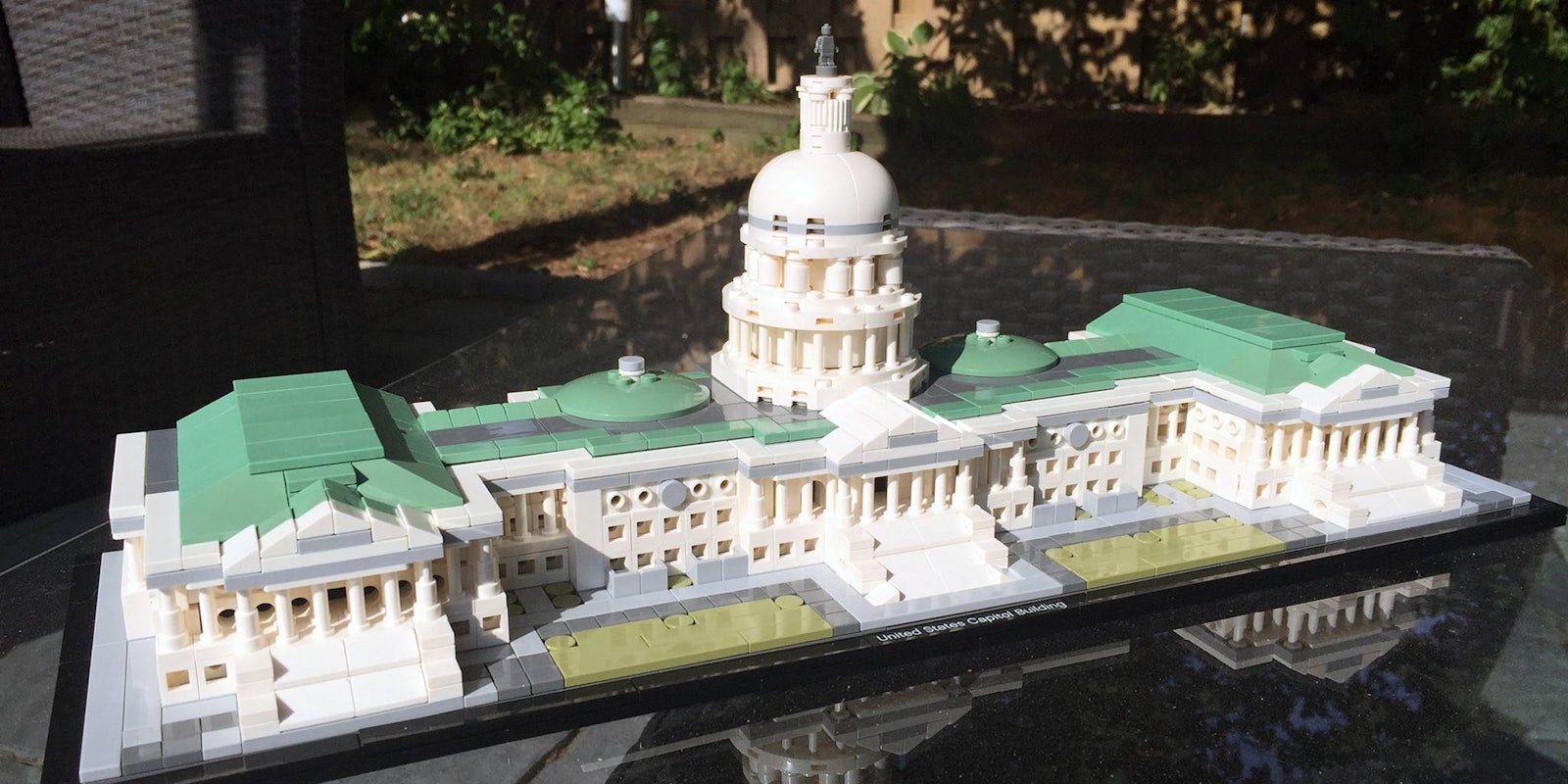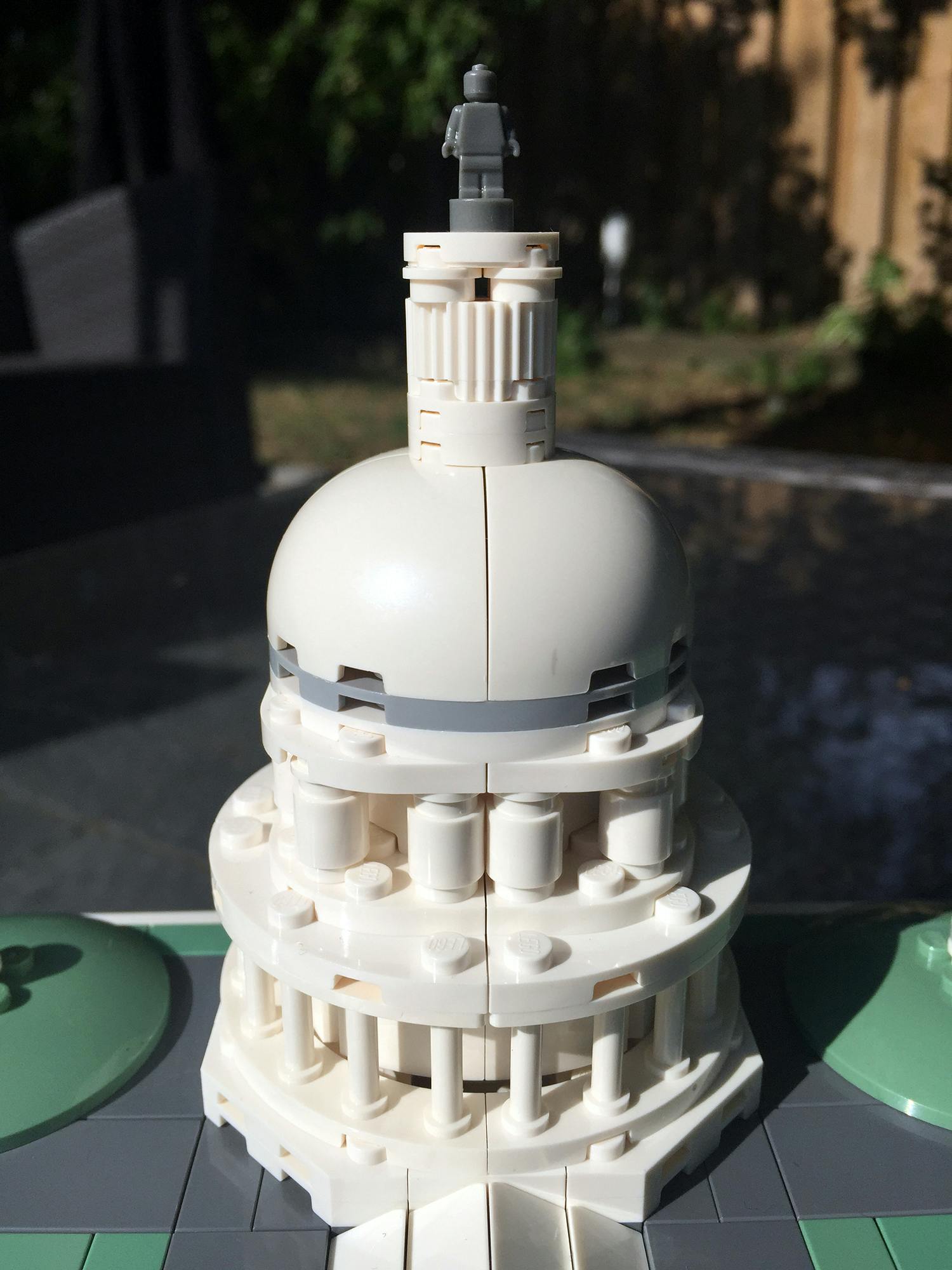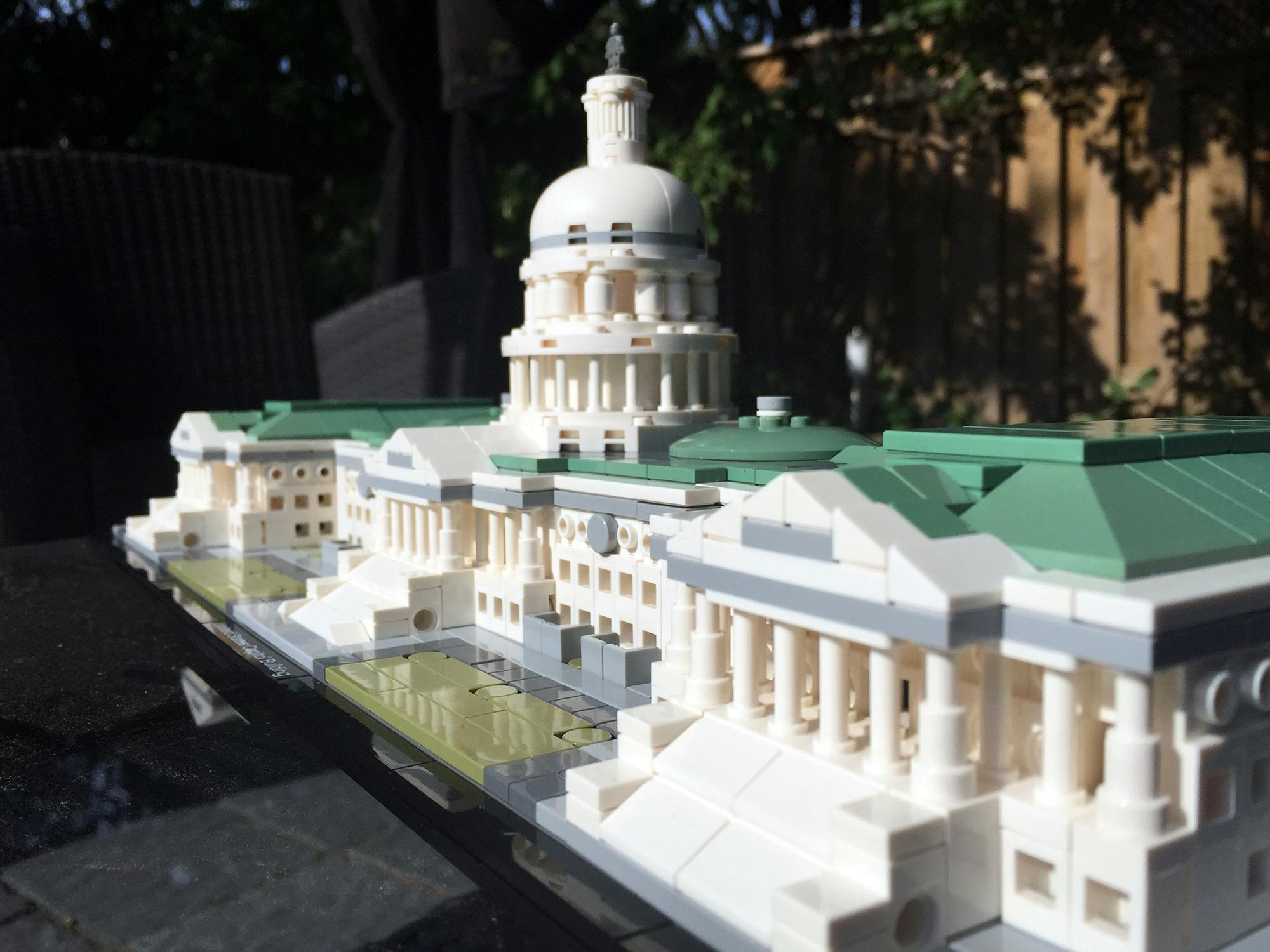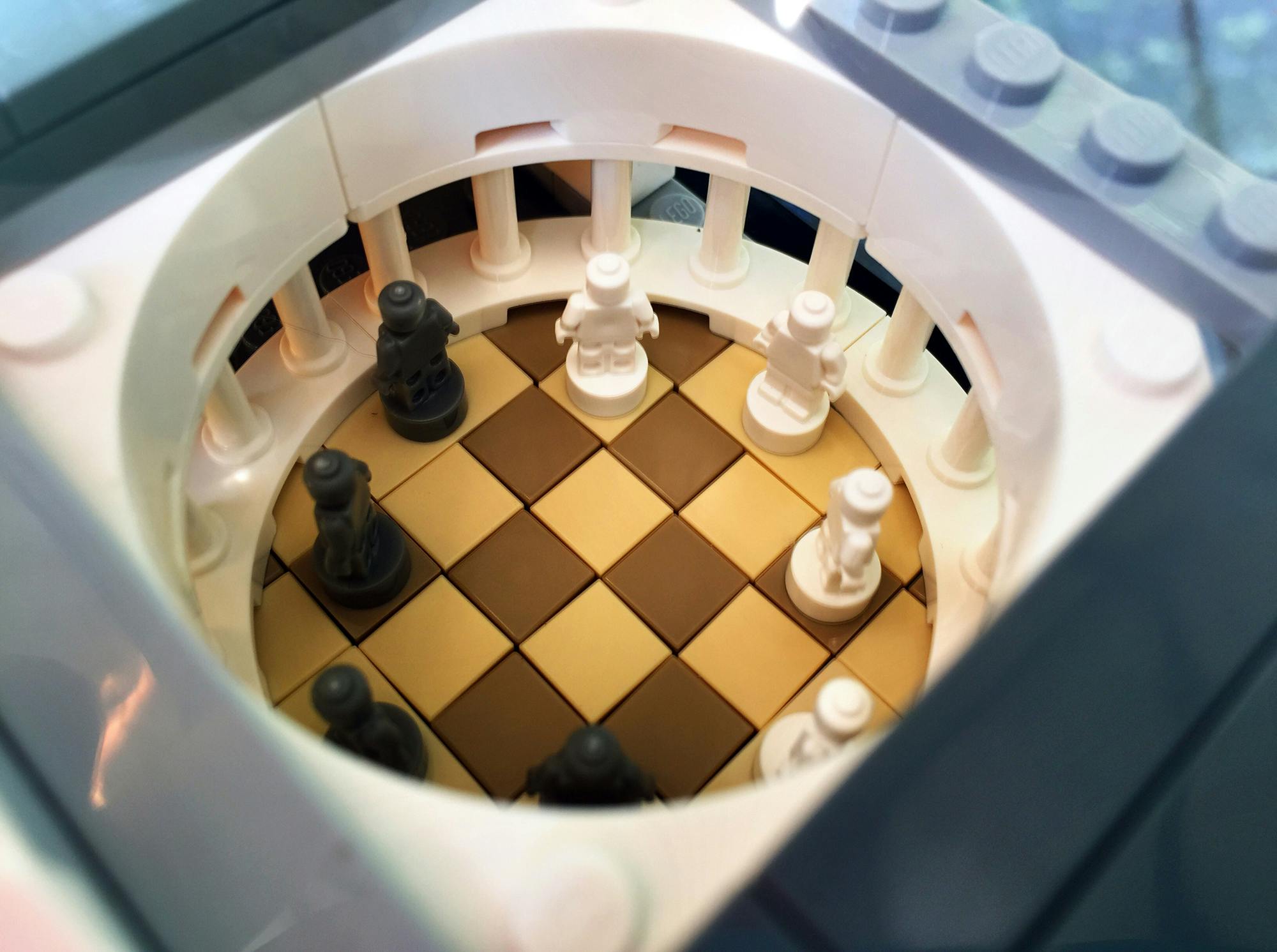With the election season quickly approaching its culmination, it’s fitting that Lego has chosen to get political with its latest Architecture Series set. Lego’s newest product recreates the U.S. Capitol—that hallowed hall of democracy where politicians decide the fate of the country.
The $99 set aims to capture the essence of the grandiose real-world building in a relatively small 1,032 pieces. While the diminutive set doesn’t inspire grandeur, it does a nice job of getting the Capitol’s look and feel right and is sure to please fans of the series.
As with other Architecture entries, the instruction booklet provides a Wikipedia entry’s worth of details on the building itself. The Capitol, it turns out, has a history as riveting as most horror movies—or elections.
French-born architect Pierre Charles L’Enfant was originally tasked with designing the building, but he was dismissed in 1792 over disagreements with President George Washington. Secretary of State Thomas Jefferson then announced a public competition to design the building, and the best entry came from unexpected quarters: William Thorton, an amateur architect from Scotland with a medical degree.
Washington praised Thornton’s Greek Revival-inspired design, which formed the basis of the building we ultimately know today for its “grandeur, simplicity and beauty.” Professional architect Stephen Hallet was brought in from France to supervise the construction.
Hallet, however, kept reworking Thornton’s plans with ideas from his own submissions to the contest. It got bad enough that he was eventually sacked for insubordination. Another architect, George Hadfield, came on board and also expressed displeasure with Thornton’s designs. Rather than get fired, he quit.
James Hoban, yet another architect, oversaw construction until the bulk of the building was done in 1800. It was then partially burned down by the British in 1814, before being expanded in 1815 and 1850. Finally, an underground visitor’s center was added to accommodate all the tourists in 2000.
That’s an already colorful history, even without getting into the many stories of ghosts that supposedly haunt the building.
The Lego structure is no less impressive with one single-square-like element making up the vast portion of its facade. Ordinarily used to connect horizontal pieces to vertical ones, this one key piece is ingeniously used to replicate the Capitol’s many, many windows in miniature scale.
It’s fun putting these pieces together—and there are a lot of them—without knowing how it’s all going to turn out. It’s only when the building’s facade is complete that their purpose becomes obvious.
The Capitol’s defining feature is obviously its dome, and Lego fittingly elects to save that part of construction for last. The best part is that it can be detached to expose the rotunda below where, just as in the real building, a circle of statues sits on a checkerboard floor.
The real statues—11 of them—depict the country’s greatest presidents, including Washington, Abraham Lincoln, and Dwight D. Eisenhower. There are only eight Lego statues, and they don’t actually replicate the presidents in detail, but they’re enough to get the point across. It’s an unexpectedly fun feature for the relatively staid Architecture series.
The Lego Capitol, like its real-world counterpart, is capped with a statue. As with the rotunda replicas, it’s a generic mini-statue rather than the iconic Statue of Freedom—a woman warrior wearing a helmet and a sword—but it’s once again a symbolic representation.
Brickrolled is a monthly Lego review column by Peter Nowak. You can read about his previous builds here.





